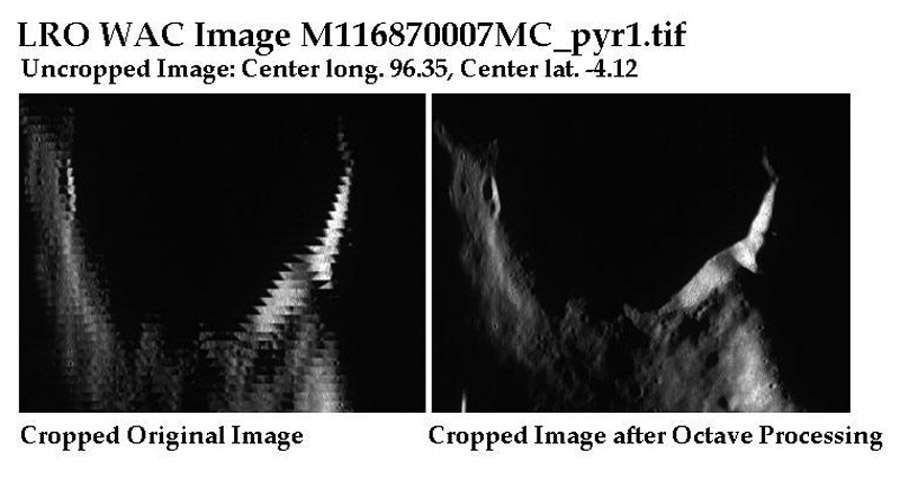Difference between revisions of "September 1, 2010"
| (5 intermediate revisions by the same user not shown) | |||
| Line 1: | Line 1: | ||
__NOTOC__ | __NOTOC__ | ||
| − | =Free | + | =Free WAC= |
| + | <!-- Start of content --> | ||
<!-- ws:start:WikiTextHeadingRule:1:<h1> --> | <!-- ws:start:WikiTextHeadingRule:1:<h1> --> | ||
<!-- ws:start:WikiTextLocalImageRule:16:<img src="/file/view/LPOD-Sept1-10.jpg/159611867/LPOD-Sept1-10.jpg" alt="" title="" /> -->[[File:LPOD-Sept1-10.jpg|LPOD-Sept1-10.jpg]]<!-- ws:end:WikiTextLocalImageRule:16 --><br /> | <!-- ws:start:WikiTextLocalImageRule:16:<img src="/file/view/LPOD-Sept1-10.jpg/159611867/LPOD-Sept1-10.jpg" alt="" title="" /> -->[[File:LPOD-Sept1-10.jpg|LPOD-Sept1-10.jpg]]<!-- ws:end:WikiTextLocalImageRule:16 --><br /> | ||
| − | <em>LRO WAC image by [mailto:revans_01420@yahoo.com | + | <em>LRO WAC image by [mailto:revans_01420@yahoo.com Rick Evans], </em><br /> |
<br /> | <br /> | ||
| − | John Moore [http://lpod. | + | John Moore [http://www2.lpod.org/wiki/August_29,_2010 started] it and Rick has taken the next big step. The Lunar Reconnaissance Orbiter's Wide Angle Camera takes 100 km wide images of great value. They are especially interesting to amateur astronomers because the WAC 75 m resolution is only 7 to 12 times better than the best telescopic images. But only a handful of the WAC images have been released by the LRO team. John figured out how to do a manual reconstruction of the venetian blind-looking raw WAC data to produce some unofficial new images. Inspired by that, Rick has just written a program to automate the process to create WAC images. He used the free program language Octave, and his [http://revans_01420.webs.com/lrowac.htm code] is available from his web site. The image on the left is how the WAC images look on the LRO website, and Rich's auto-processed image is on the right. There are many [http://wms.lroc.asu.edu/lroc#damoon thousands] of WAC files waiting to be processed and shared, and amateur's now have the tool to do it. I hope LPOD will be flooded by thousands of fabulous images of every interesting feature on the Moon, and then mosaics of major basins, and finally the first global WAC mosaic. <br /> |
<br /> | <br /> | ||
| − | <em>[mailto:tychocrater@yahoo.com | + | <em>[mailto:tychocrater@yahoo.com Chuck Wood]</em><br /> |
<br /> | <br /> | ||
<strong>Technical Details</strong><br /> | <strong>Technical Details</strong><br /> | ||
| − | See Rick's technical [http://revans_01420.webs.com/lrowac.htm | + | See Rick's technical [http://revans_01420.webs.com/lrowac.htm description].<br /> |
<br /> | <br /> | ||
<hr /> | <hr /> | ||
| − | < | + | <table class="wiki_table"> |
| − | < | + | <tr> |
| − | ---- | + | <td> <!-- RemoveRevolverMaps --> |
| − | + | <!-- RemoveRevolverMaps --> | |
| − | + | </td> | |
| + | <p><b>Yesterday's LPOD:</b> [[August 31, 2010|An Unexpected Tale]] </p> | ||
| + | <p><b>Tomorrow's LPOD:</b> [[September 2, 2010|One Frame Wonder]] </p> | ||
| + | <!-- End of content --> | ||
| + | {{wiki/ArticleFooter}} | ||
Latest revision as of 07:36, 28 October 2018
Free WAC

LRO WAC image by Rick Evans,
John Moore started it and Rick has taken the next big step. The Lunar Reconnaissance Orbiter's Wide Angle Camera takes 100 km wide images of great value. They are especially interesting to amateur astronomers because the WAC 75 m resolution is only 7 to 12 times better than the best telescopic images. But only a handful of the WAC images have been released by the LRO team. John figured out how to do a manual reconstruction of the venetian blind-looking raw WAC data to produce some unofficial new images. Inspired by that, Rick has just written a program to automate the process to create WAC images. He used the free program language Octave, and his code is available from his web site. The image on the left is how the WAC images look on the LRO website, and Rich's auto-processed image is on the right. There are many thousands of WAC files waiting to be processed and shared, and amateur's now have the tool to do it. I hope LPOD will be flooded by thousands of fabulous images of every interesting feature on the Moon, and then mosaics of major basins, and finally the first global WAC mosaic.
Chuck Wood
Technical Details
See Rick's technical description.
Yesterday's LPOD: An Unexpected Tale
Tomorrow's LPOD: One Frame Wonder
COMMENTS?
Register, Log in, and join in the comments.



